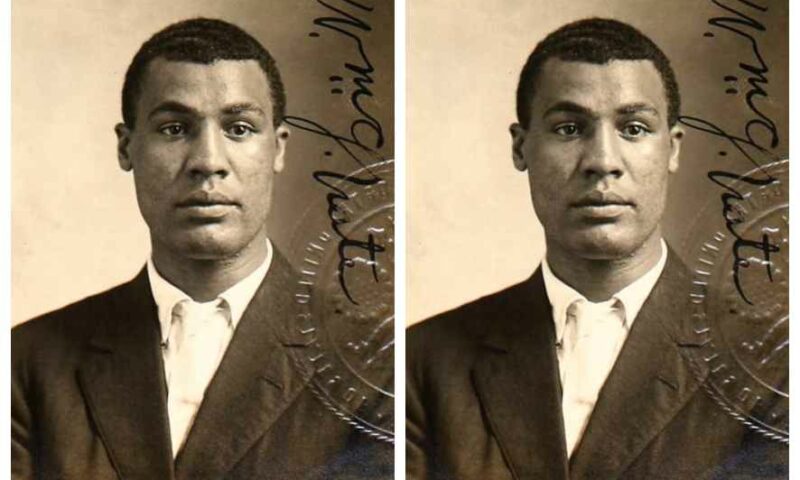By Spy Uganda
Heavyweight champion, Big Bill Tate, was among the many fortunate African Americans who had access to formal education in the 1800s. Though he completed the State’s formal school in Huntsville, Alabama, finding a job to match his skills became difficult. Though he studied printing, like many blacks in Montgomery, he had to settle on menial jobs to survive.
Boxing became Big Bill’s means of escape from economic hardship by default, which had been deepened by the enforcement of Jim Crow laws. This was evident in the fact that out of the 53,000 blacks in Montgomery, only 1,000 of them had the right to cast their ballot in 1911.
When the leading health and exercise advocate, Dr. F.C. Caffey, presented him with the opportunity to train him, he gladly accepted the offer without any hesitation. Dr. Caffey was the medic in charge of the training regime of Jack Johnson, the first African American heavyweight champion. He met Big Bill shortly after helping Jack Johnson in his fight with Jim Jefferies.

Big Bill was 6.7 feet, 6 inches, and weighed 230 pounds, an extraordinary body size that earned him the nickname Big. A size that with the right training and diet, would sooner than later enable him to clutch the world title. Dr. Caffey was right, after two years of training him, he shot into prominence at his 1912 early fight in New York, as captured in Edwin Bancroft Henderson’s book, “the negro in sports.” He became the World Colored Heavyweight Champion on January 25, 1917, after defeating Sam Langford, who was the reigning title holder.
Sam Langford reclaimed the title later, but the brief stint with fame was all that Big Bill needed to fight the next battle against racial segregation and inequality. He had abandoned his dream of enrolling at the Meharry Medical College when he realized he could make more money as a prizefighter than schooling to add up to the statistics in the unskilled job market. This contributed to the factors that fueled his passion to touch lives instead of following riches.

Even though he earned more in boxing, he had concerns about racial discrimination in the sport. Many black fighters made more money in interracial fights, but boxing promoters were reluctant in staging bouts between whites and blacks. This advertently took a toll on Big Bill’s health because he had to face African American contenders such as Harry Wills, Sam Langford, Kid Norfolk, and George Godfrey, who were equally good as himself. It was a case of either fighting a black opponent or quitting the sport.
Many boxing fanatics and lovers believe Big Bill’s career was overshadowed by his partnership with Jack Dempsey, his sparring colleague, who became a heavyweight champion after his victory over Jess Willard; but Big Bill wasn’t concerned about that, his main goal was to leave a legacy beyond the rings. Pursuing this passion, he decided to use his influence to champion economic rights for the thousands of African Americans who were pitted against the systemic challenge. These difficulties forced many African Americans to take advantage of the Great Migration with as many as 56,000 relocating to Chicago between 1910 and 1920.
The boxing legend became self-aware that blacks were relegated to the backdrop when it came to employment and were often the first to be sacked. When he hung his gloves, he championed the advocacy for unions to demand their rights and for African Americans to reject poor working conditions.
One of the notable campaigns he spearheaded with a leading soapbox orator and radical black newspaper, the Chicago Whip, was the “Don’t Buy Where You Can’t Work” initiative. By the end of this aggressive campaign, 2,600 African Americans had been employed in white-collar jobs.






